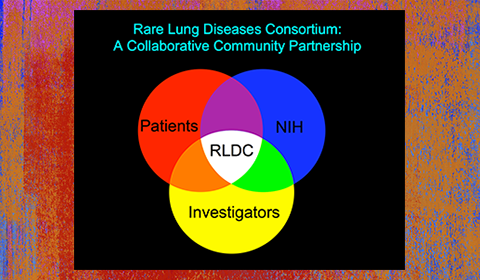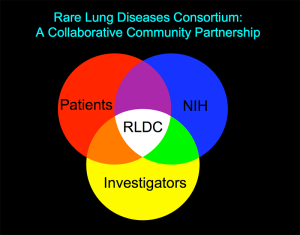
NIH-Funded Rare Lung Diseases Consortium (RLDC) Fosters Discoveries in Typically Understudied Conditions
Responding to a congressional initiative to promote clinical research for rare diseases – that collectively affect approximately 25 million Americans – the National Institutes of Health (NIH) established the Rare Diseases Clinical Research Network (RDCRN) in 2003. A uniquely structured collaborative network comprised of clinical investigators, patients, and the NIH, the RDCRN is currently in its third five-year cycle of NIH-funding and supports clinical research on more than 200 rare diseases. University of Cincinnati Professors Bruce Trapnell, MD and Frank McCormack, MD initially founded the Rare Lung Diseases Consortium (RLDC) in 2003 and were recently successful in refunding the RLDC to continue developing molecular pathway-driven diagnostics and therapeutics for rare lung diseases.
Currently, the RLDC is primarily focused on three conditions: lymphangioleiomyomatosis (LAM) overseen by McCormack, Pulmonary Alveolar Proteinosis (PAP) syndrome under Trapnell’s leadership, and Hermansky-Pudlak Syndrome (HPS) led by Lisa Young, MD, Director of the Rare Lung Diseases Clinic at partner institution Vanderbilt University and former RLDC Fellow. Prior LAM research within the RLDC included completion of the MILES trial, which identified sirolimus as the first effective, specific therapy for LAM. Current goals for LAM research within the RLDC will target regulatory approval of a novel diagnostic blood test and optimization and regulatory approval of sirolimus therapy for LAM. Prior PAP research led to development of blood-based diagnostic tests to diagnose the diseases that cause PAP in more than 90% of patients as well as the discovery of hereditary PAP, a genetic form of PAP caused by mutations in GM-CSF receptor genes. Current goals for PAP research include establishing a national registry to define the natural history of PAP and to prepare for planned treatment trials including inhaled GM-CSF therapy of autoimmune PAP and pulmonary macrophage transplantation therapy of hereditary PAP. HPS is at an earlier stage in the discovery paradigm, and Young is focused on conducting observational trials to advance early disease screening and understand the natural history.
“I find working at the interface between science and medicine particularly exciting because it provides unique opportunities for discovery and for translating the fruits of research to benefit patients, in real time,” says Trapnell. Based on their shared vision that integrating research and clinical care will accelerate this translation to benefit patients, McCormack and Trapnell are transforming their clinic into a comprehensive lung health center by offering every patient the possibility of participating in research aimed at better understanding, identifying, and treating lung diseases.


